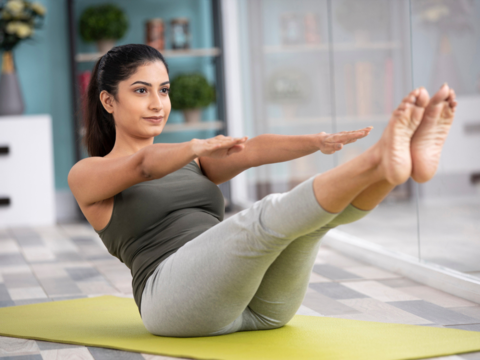
In the dynamic realm of fitness, the allure of bodyweight training has surged to prominence. This increasingly popular approach capitalizes on your body’s intrinsic weight, offering a path to strength, endurance, and vitality that transcends the boundaries of traditional gym setups. In this comprehensive guide, we’ll delve deep into the world of bodyweight training, unraveling its fundamental principles, exploring its multitude of benefits, and providing you with the tools to embark on your transformative journey.
Table of Contents
Understanding Bodyweight Training
Bodyweight training, at its core, is a form of exercise that harnesses the resistance provided by your body weight. The brilliance lies in its simplicity: no weights, no machines, just your own body, and determination. This accessibility makes it an ideal fitness option for beginners and seasoned athletes.
Within the realm of bodyweight training lies a treasure trove of exercises, each designed to engage specific muscle groups and promote overall functional strength. Bodyweight exercises offer an array of movements that cater to your fitness goals and preferences, from push-ups that sculpt your chest and triceps to squats that fortify your legs.
The Benefits of Bodyweight Training
1. Convenience and Accessibility
Imagine being able to work out anytime, anywhere, without the constraints of a gym or the need for elaborate equipment. Bodyweight training grants you this freedom. Whether at home, in a park, or traveling, your body becomes your gym, and the world becomes your training ground.
2. Functional Strength and Movement
One of the most appealing aspects of bodyweight training is its focus on functional strength. Unlike isolated gym exercises, these movements mirror real-life actions, helping you easily perform daily activities. Your coordination and balance naturally improve as you engage multiple muscle groups simultaneously.
3. Scalability and Progressive Overload
Bodyweight training offers a seamless path to progress regardless of your fitness level. By mastering basic movements and then gradually increasing the difficulty, you embark on a journey of consistent improvement. This concept, known as progressive overload, ensures that your body is constantly challenged, stimulating muscle growth and endurance enhancement.
Tips For Getting Started with Bodyweight Training
1. Assessing Your Fitness Level
Before diving into bodyweight training, take a moment to assess your current fitness level. This evaluation will help you establish a baseline and set realistic goals tailored to your unique starting point.
2. Designing a Routine
Crafting a balanced workout routine is pivotal for a successful bodyweight training journey. Aim for a combination of exercises that target various muscle groups, ensuring a comprehensive approach to fitness. To get you started, here are some fundamental bodyweight exercises for different areas:
- Upper Body: Push-ups, Dips, Pull-ups (if accessible via calisthenics bars)
- Lower Body: Squats, Lunges
- Core: Planks, Leg Raises
3. Incorporating Progressions
As you become comfortable with basic movements, it’s time to elevate your workout. Progressions involve modifying exercises to challenge your body further. For instance, you might transition from knee push-ups to full push-ups or from regular squats to pistol squats for an added challenge.
Tips for Effective Bodyweight Training
1. Proper Form and Technique
In the realm of bodyweight training, proper form reigns supreme. Ensuring correct posture and alignment maximizes the effectiveness of exercises and minimizes the risk of injury. Be mindful of your body’s positioning and movement throughout each exercise.
2. Warm-Up and Cool-Down
Before diving into your workout, a thorough warm-up is essential. Engage in dynamic stretches that elevate your heart rate and increase blood flow to your muscles. Post-workout, a cooldown featuring static stretches aids in preventing muscle tightness and promotes flexibility.
3. Consistency and Progress Tracking
Consistency is the cornerstone of success in any fitness endeavor. Design a workout schedule that suits your lifestyle and stick to it. Track your progress by keeping a journal; this motivates you and offers a clear view of how far you’ve come.

Ways to Advance Your Bodyweight Training
-
Calisthenics and Beyond
As your bodyweight training journey evolves, you might find yourself drawn to the world of calisthenics. Calisthenics delves into advanced bodyweight exercises that push the limits of strength and skill. Moves like muscle-ups, handstands, and planches become attainable feats, showcasing the incredible capabilities of your body.
-
Incorporating Equipment
While bodyweight training often requires nothing more than your body’s weight, adding certain equipment can amplify your workouts. A Calisthenics bar, for example, introduces a world of possibilities. Pull-up bars offer a platform for upper body strength, while parallel bars provide avenues for dips and other movements.
Injury Prevention and Recovery in bodyweight training
-
Precautions and Listening to Your Body
While bodyweight training is empowering, it’s crucial to practice caution. Always listen to your body; discomfort or pain is a signal to modify or cease an exercise. Pay attention to the messages your body sends and prioritize your well-being.
-
Active Recovery and Mobility Work
The holistic approach to bodyweight training includes active recovery techniques and mobility work. Foam rolling, gentle stretching, and even yoga can alleviate muscle soreness and ensure that your body remains supple and functional.
Conclusion
The realm of bodyweight training presents a boundless world of opportunities for elevating your fitness journey. Through its accessibility, functional benefits, and adaptability, this approach proves that strength and transformation lie within your grasp. Whether you’re a beginner discovering the art of push-ups or a seasoned athlete mastering the intricacies of calisthenics bars, bodyweight training offers a voyage toward a fitter, more resilient, and elevated version of yourself. By embracing this path, you’re not only cultivating physical strength but also embarking on a holistic journey of empowerment and vitality.